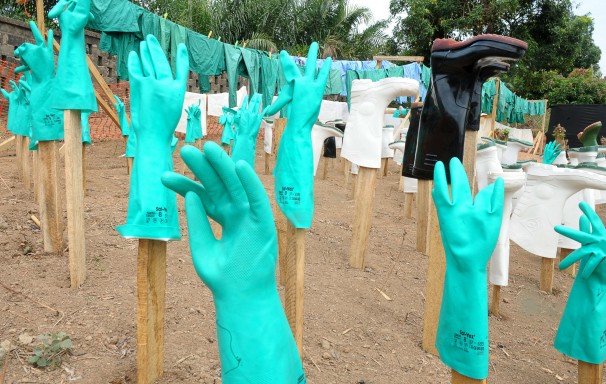
"The number of new cases have fallen rapidly," Rafi Diallo, a spokesman for Guinea's health ministry, told Reuters. On the day of the interview, April 15, there were 159 confirmed or suspected cases of the disease. "Once we no longer have any new cases ... we can say that this is totally under control."
It's eight days later. And the number of those killed by the Ebola killed in Guinea is now 136. Nearly 210 cases have been confirmed. In all, across Liberia and Guinea, 142 people have been killed - and 242 infected - in an outbreak that began months ago in the forested villages of southeast Guinea and shot to the capital city.
It has dominated headlines in Africa since. The World Health Organization, which says it may spread for months, cautions that more deaths could be on the way. "As the incubation period for [Ebola] can be up to three weeks, it is likely that the Guinean health authorities will report new cases in the coming weeks and additional suspected cases may also be identified in neighboring countries," the WHO reported on Tuesday.
The disease, for which there is no cure, is terrifying in part because of the gruesome way it kills. It predominantly spreads through blood, secretions and other bodily fluids. At first, the WHO says, symptoms include intense weakness and fever, but then the sickness deepens with bouts of diarrhea, vomiting, and internal and external bleeding.
There are several theories explaining the outbreak, Africa's worst in seven years and the first to kill in the continent's west. One was published last week in the New England Journal that established "the emergence of a new EBOV strain in Guinea," which had "evolved in parallel" to other disease veins.
It said the sickness first appeared in December - substantially earlier than other estimates. "The [virus] introduction seems to have happened in early December 2013 or even before," the researchers said. "It is suspected that the virus was transmitted for months before the outbreak became apparent because of clusters of cases in the [Guinea] hospitals of Guéckédou and Macenta. This length of exposure appears to have allowed many transmission chains and thus increased the number of cases of Ebola virus disease."
The scientists said data suggests "a single introduction of the virus into the human population. ... Further investigation is ongoing to identify the presumed animal source of the outbreak." The animal that's most likely behind the outbreak is the fruit bat, which pervades large swaths of west Africa. Officials suspect someone ate the meat of a contaminated bat, fell ill, and then spread the infection.
The fatality rate, the study concluded, was 86 percent "among the early confirmed and 71 percent among the clinically suspected cases," a rate consistent with previous Ebola outbreaks. "The emergence of the virus in Guinea highlights the risk of [Ebola] outbreaks in the whole West African sub-region."



Comment: Although animals can certainly be reservoirs, the source may have an altogether different origin. For more information, see:
New Light on the Black Death: The Viral and Cosmic Connection
Black Death found to be Ebola-like virus